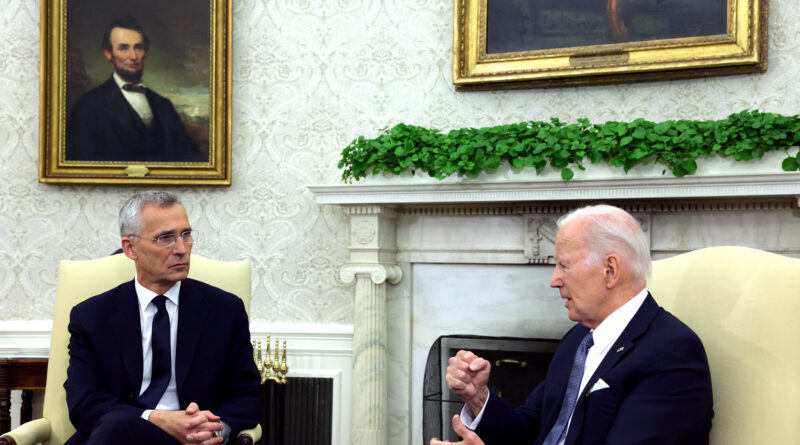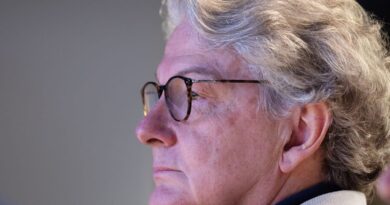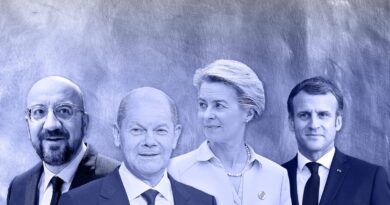Biden ‘open’ to plan that eases Ukraine’s path to NATO membership
“We are engaging with our NATO allies on this middle ground approach to determine whether it can gain consensus,” the senior official said. “We are seeking to find common ground on language that supports NATO’s commitment to Ukraine’s transatlantic integration.”
For the plan to move forward, “the alliance would need to go along with it.”
Stoltenberg told USA Today this week that he saw “no point” in holding the summit without offering a clear “signal” that Ukraine would eventually be a NATO member. The Washington Post first reported the Biden administration’s interest in the plan.
Ivo Daalder, the U.S. ambassador to NATO from 2009 to 2013, called the MAP-removal idea a “significant” step. “It does mean that you can get to the process of membership much more speedily,” he said. “It tells the Ukrainians they are moving closer.”
The process can take years. North Macedonia, which joined the alliance in 2020, entered its MAP in 1999 when the country had a different official name, the Republic of Macedonia.
Ukraine sought membership in NATO in 2008. But Russia was openly against the idea, a stance that made allies such as France and Germany nervous about spelling out the steps that Ukraine and Georgia should have to take in their MAPs in order to join. Doing so would signal to Moscow that, eventually, those former Soviet countries would form part of the Western military bloc it opposes.
The alliance’s compromise decision, codified in NATO’s Bucharest Summit Declaration, was that both nations wouldn’t be told what their specific MAP should be but would someday become members. Russia still invaded Georgia four months afterward. Ukraine’s movement toward membership was scrapped in 2010 after Viktor Yanukovych, who saw no need for further integration with NATO, became Ukraine’s president.
One adviser to the Ukrainian government said the MAP issue has become “toxic” for some on NATO’s eastern front who support a quick Ukraine admission into the alliance due to the varying standards applied to different prospective alliance members. The adviser noted that Ukraine’s military has quickly modernized to NATO standards, while some democratic reforms have been put on the back burner due to the war.
NATO’s most recent member, Finland, was allowed to join this year without a MAP in place. Sweden would receive the same treatment as Finland, but it’s still awaiting Turkey’s and Hungary’s approval to join.
“Ukraine is equally prepared, from a military point of view, as Finland and Sweden,” said Kurt Volker, the U.S. special representative for Ukraine during the Trump administration. He further offered that NATO should add a “political chapeau” to its proposal that shows the alliance is “more forward-leaning” in its belief that Ukraine will eventually become a member state. “They could affirm they’ll review Ukraine’s pathway during next year’s summit in Washington,” he said.
Pulling Ukraine under the NATO umbrella is “the only logical solution,” one European diplomat said, adding that in the meantime, Europe and the U.S. must “provide Ukraine clear-cut NATO security guarantees. This is important for the future of European security.”
An informal meeting of NATO foreign ministers May 31 and June 1 saw allies check each others’ temperature on the MAP-removal proposal, Daalder noted. The diplomats further considered tethering Ukraine closer to the alliance by upgrading the existing Ukraine-NATO Commission into a Council, which would allow Kyiv to call official meetings with members.
Ukrainian President Volodymyr Zelenskyy hoped his country would receive both security guarantees and a clear, speedy pathway to NATO membership during next month’s gathering in Vilnius. The Biden-backed Stoltenberg plan falls short of that wish but does improve Ukraine’s chances of accession after the war.
The proposal is also a compromise. Some allied members, particularly in Eastern Europe, want Ukraine to become a member imminently, even with Russian troops inside the country and missiles striking civilian targets. Others fear that welcoming Ukraine soon would further exacerbate strained relations with Russia while accepting a member that suffers from corruption and other anti-democratic problems.
Plus, NATO’s Article 5 compels allies to come to the defense of an attacked fellow member. To welcome Ukraine into the club now would effectively put NATO at war with Russia.
“I think the allies now are in agreement that a proper invitation is unlikely while they’re engaged in a full-scale war,” the current U.S. ambassador to NATO, Julianne Smith, told POLITICO last week.
Daalder thinks the plan might work because “it’s not an invitation to membership or a timeline,” but “it does remove a hurdle.”
Hanging over allied meetings in Brussels this week and next month’s summit is the fate of Stoltenberg, whose tenure has already been extended three times. None of the top candidates floated so far — Danish Prime Minister Mette Frederiksen, British defense secretary Ben Wallace or and Estonian Prime Minister Kaja Kallas — has been able to make themselves the consensus pick.
Stoltenberg is open to staying in his position to ensure continuity as the war in Ukraine grinds through its second year but is concerned about appearing to be a fallback option if there is no broad consensus among the 31 members of NATO about who should take the reins.



